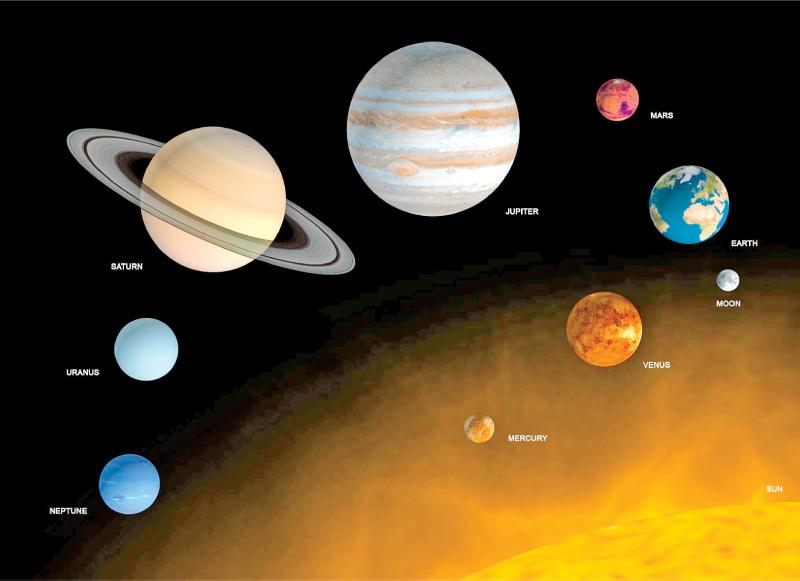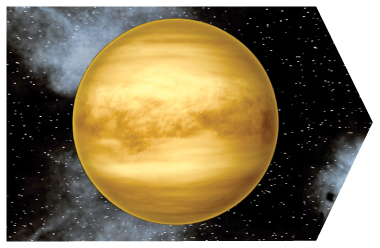
What is Venus like?
Venus can be best described with two words: cloudy and hot. The entire surface of Venus is constantly covered by clouds. These clouds are made up mostly of carbon dioxide which has a greenhouse affect keeping in the Sun's heat like a giant blanket. As a result Venus is the hottest planet in our solar system. It is even hotter than Mercury, which is much closer to the Sun.
Venus is a terrestrial planet like Mercury, Earth, and Mars. This means it has a hard rocky surface. Its geography is somewhat like Earth's geography with mountains, valleys, plateaus, and volcanoes. It is completely dry, however, and has long rivers of molten lava and thousands of volcanoes. There are over 100 giant volcanoes on Venus that are each 100km or more across.
How does Venus compare to Earth?
Venus is similar to Earth in size, mass, and gravity. It is sometimes called Earth's sister planet. Of course, Venus’ dense atmosphere and intense heat make Venus very different in many ways. Water, an essential part of Earth, isn't found on Venus as it all has evaporated from the heat.
Moons : 0
Mass : 82% of Earth
Diameter : 7520 miles
Year : 225 Earth days
Day : 243 Earth days
Temperature : 850 degrees F
Distance from the Sun : 2nd planet from the sun,67 million miles
How do we know about Venus?
Since Venus is so easily seen without a telescope there is no way to know who might have first noticed the planet. Some ancient civilizations thought it was two planets or bright stars: a “morning star” and an “evening star”. In the 6th century BC, a Greek mathematician named Pythagoras noted that it was the same planet. It was Galileo in the 1600's who figured out that Venus orbited the sun.
 Since the space age began there have been many probes and spacecraft sent to Venus. Some spacecraft have even landed on Venus and have sent us back information on what the surface of Venus is like under the clouds. The first spacecraft to land on the surface was Venera 7, a Russian ship. Later, from 1989 to 1994, the Magellan Probe used radar to map Venus’ surface in great detail.
Since the space age began there have been many probes and spacecraft sent to Venus. Some spacecraft have even landed on Venus and have sent us back information on what the surface of Venus is like under the clouds. The first spacecraft to land on the surface was Venera 7, a Russian ship. Later, from 1989 to 1994, the Magellan Probe used radar to map Venus’ surface in great detail.
Since Venus is inside the Earth's orbit, the brightness of the Sun makes it difficult to see from the Earth during the day. However, just after sunset or just before sunrise Venus becomes the brightest object in the sky. It is typically the brightest object in the night sky except for the moon.
Interesting facts about Planet Venus
* Venus actually rotates backwards from the way the rest of the planets rotate.
* Some scientists believe this backward rotation was caused by a giant impact with a large asteroid or comet.
* The atmospheric pressure on the surface of the planet is 92 times that of Earth's.
* Venus has a unique lava feature called a “pancake” dome or farra which is a large (up to 20 miles across and 3000 feet high) pancake of lava.
* Venus is named after the Roman goddess of love. It is the only one of the planets that is named after a female. It is the sixth largest of the eight planets.
